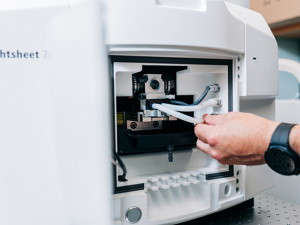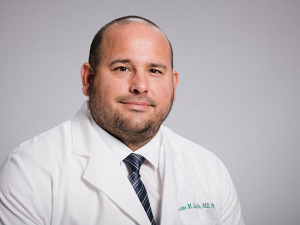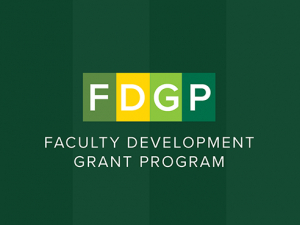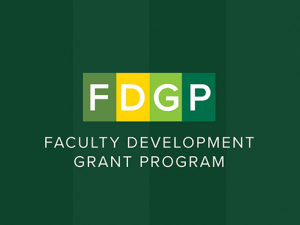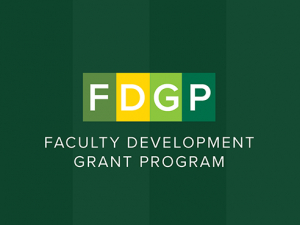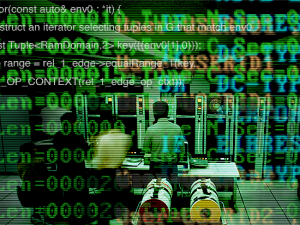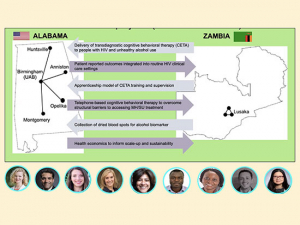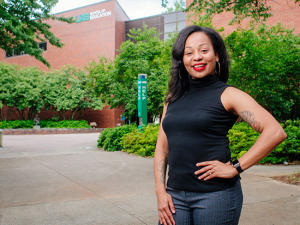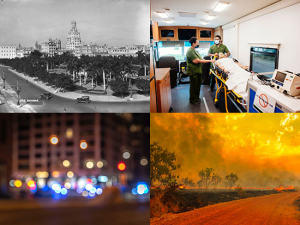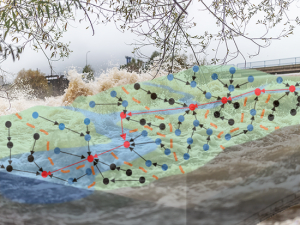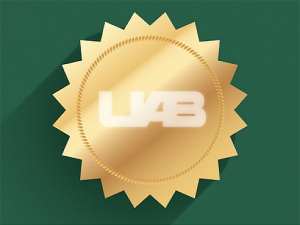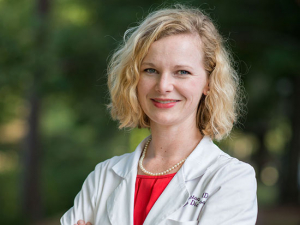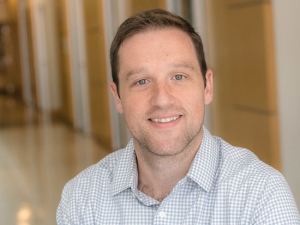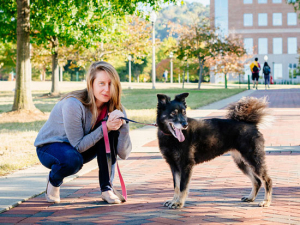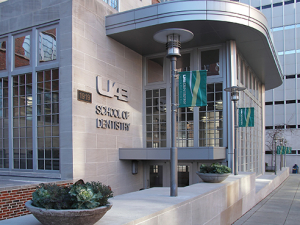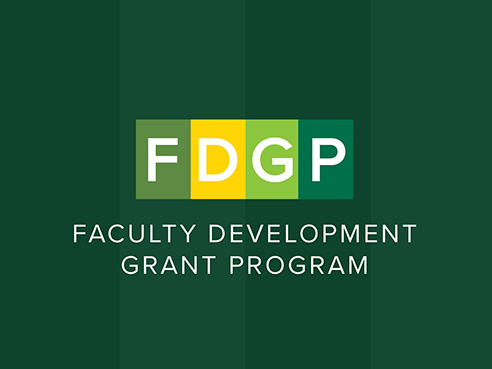 On April 25, the recipients of the 2022 Faculty Development Grant Program were announced. The annual program awards approximately $100,000 in seed money to early career faculty to pursue research, scholarly works and creative activity. “Funding faculty in this way enables them to build new skills to enhance peer recognition across campus and beyond UAB,” noted Pam Benoit, Ph.D., provost and senior vice president for Academic Affairs.
On April 25, the recipients of the 2022 Faculty Development Grant Program were announced. The annual program awards approximately $100,000 in seed money to early career faculty to pursue research, scholarly works and creative activity. “Funding faculty in this way enables them to build new skills to enhance peer recognition across campus and beyond UAB,” noted Pam Benoit, Ph.D., provost and senior vice president for Academic Affairs.
The funded projects are a cross-section of efforts across campus and a window into the creativity of early career faculty. We asked four grant recipients to share some insight into their projects.
Travel sparks connection and imagination
Megan Brooker, Ph.D.
Teaching Assistant Professor, Department of Sociology
 How do individuals envision themselves fitting into the jigsaw puzzle of the rest of the world, past and present? The American sociologist C. Wright Mills proposed the idea of the sociological imagination as the means by which people can picture their own stories and decisions within the context of a larger and interconnected history and society. But this is a concept that is difficult to grasp through textbooks alone, Brooker notes. With her Faculty Development Grant Program award, she is developing an experiential learning course on the civil rights movement for the summer 2023 semester.
How do individuals envision themselves fitting into the jigsaw puzzle of the rest of the world, past and present? The American sociologist C. Wright Mills proposed the idea of the sociological imagination as the means by which people can picture their own stories and decisions within the context of a larger and interconnected history and society. But this is a concept that is difficult to grasp through textbooks alone, Brooker notes. With her Faculty Development Grant Program award, she is developing an experiential learning course on the civil rights movement for the summer 2023 semester.
“Social movements, my field of expertise, offer a unique lens to enliven the abstract notion of the sociological imagination and activate it in relation to students’ everyday lives,” Brooker said. The course will include “an interactive field tour experience visiting key movement sites in Alabama,” including locations in Montgomery and Selma as well as Birmingham. Those trips will give students concrete experience to “more successfully achieve the goals of abstract thinking and real-world application of the course material,” Brooker said. She will measure the tour’s effectiveness through students’ field journals, pre- and post-tests on course content and concepts, survey evaluations, and focus group reflections. She also plans to develop a manuscript on experiential learning for journal publication.
“If successful, the project also offers distinct benefits to student learning by offering a hands-on learning experience that physically and intellectually moves students outside their comfort zone such that they can more actively engage with, reflect upon and apply the abstract concepts and theories of sociology to the historical study of the civil rights movement, to new academic questions and in their everyday lives,” Brooker said.
Engaging young scientists in the search for safer MRIs
Aaron Alford, Ph.D.
Instructor, Department of Chemistry
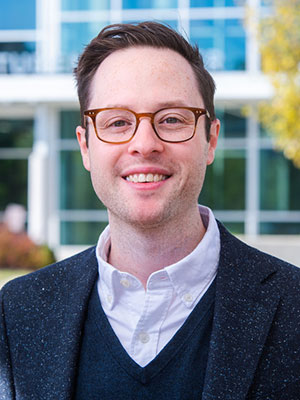 The remarkable details produced by magnetic resonance imaging largely owe their clarity to contrast agents based on the element gadolinium. “Gadolinium-based compounds are currently the de facto standard for clinical imaging,” Alford said, “due mostly to the unmatched paramagnetic character of gadolinium” — namely its responsiveness to the powerful magnets used in MRI machines. “However, gadolinium is particularly toxic.” A potential alternative is manganese, which “is well tolerated biologically,” Alford said. “Although typical manganese-based agents may not match the raw paramagnetic moment of those based on gadolinium, there may be hidden potential that can be unlocked” through the design of chelators — compounds that form complexes with metal ions. “At a minimum, a small tradeoff in absolute imaging contrast may be acceptable when the toxicity aspect is considered,” Alford said.
The remarkable details produced by magnetic resonance imaging largely owe their clarity to contrast agents based on the element gadolinium. “Gadolinium-based compounds are currently the de facto standard for clinical imaging,” Alford said, “due mostly to the unmatched paramagnetic character of gadolinium” — namely its responsiveness to the powerful magnets used in MRI machines. “However, gadolinium is particularly toxic.” A potential alternative is manganese, which “is well tolerated biologically,” Alford said. “Although typical manganese-based agents may not match the raw paramagnetic moment of those based on gadolinium, there may be hidden potential that can be unlocked” through the design of chelators — compounds that form complexes with metal ions. “At a minimum, a small tradeoff in absolute imaging contrast may be acceptable when the toxicity aspect is considered,” Alford said.
Alford has already been giving his upper-division chemistry undergraduates experience in synthesizing novel manganese compounds and evaluating their chemical properties to assess their suitability as MRI contrast agents. Some of this evaluation can be done “with spectroscopic methods common to chemistry such as nuclear magnetic resonance,” Alford said. “But images are much more powerful.”
With Alford’s Faculty Development Grant Program award, his students will be able to measure the imaging contrast of their novel compounds on actual MRI scans. (They will also get access to more expensive reagents that “will allow us to make more interesting compounds,” he said.) “The students will be getting the unique experience of using a clinical MRI for their research,” Alford said. “I would like to show them that even the most advanced scientific tools are not out of reach to young scientists at a collaborative and innovative university such as UAB.”
A large proportion of undergraduate chemistry majors go on to jobs in research or to graduate school, Alford explains. They will benefit from having “advanced projects and instrumentation to put on their CVs and talk about in their interviews,” he said. “I’m hoping this opportunity gives them the extra confidence and inspiration they need to go get the best possible start to their careers.”
New insight on stress and the microbiome in underrepresented minority students
Christine Loyd, Ph.D.
Assistant Professor, Department of Clinical and Diagnostic Sciences
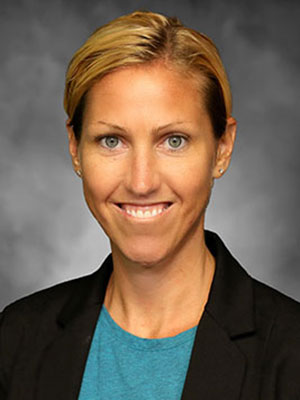 Does psychological and physiological stress in underrepresented minority students lead to higher cortisol levels and changes in the makeup of the gut microbiome? Previous research has shown that these students have greater difficulty adjusting to college and experience greater psychological stress compared to their white peers. But the effects on their bodies — the physiological impact — is unknown. Starting in fall 2021, Loyd and a fellow assistant professor in her department, Samantha Giordano-Mooga, Ph.D., began studying cortisol levels and their relationship to microbial species in the gut in white and underrepresented minority, or URM, undergraduates. Faculty Development Grant Program funding will support and expand their research.
Does psychological and physiological stress in underrepresented minority students lead to higher cortisol levels and changes in the makeup of the gut microbiome? Previous research has shown that these students have greater difficulty adjusting to college and experience greater psychological stress compared to their white peers. But the effects on their bodies — the physiological impact — is unknown. Starting in fall 2021, Loyd and a fellow assistant professor in her department, Samantha Giordano-Mooga, Ph.D., began studying cortisol levels and their relationship to microbial species in the gut in white and underrepresented minority, or URM, undergraduates. Faculty Development Grant Program funding will support and expand their research.
“We hypothesize that, compared to their white peers, URM undergraduates experience both greater acute and chronic psychological stress as indicated by greater amounts of cortisol in saliva and nail samples, respectively,” the researchers wrote in their grant application.
Loyd and Giordano-Mooga typically begin recruitment during the first week of the semester using flyers posted around campus, as well as announcements in their own classes and those of other instructors. “We are doing two interviews, one at the start of the semester and one at the end of the semester, to examine how changes in psychological and physiological stress affect the microbiome of the gut among our students,” Loyd said.
Findings from the study, the researchers said, “could help in developing targeted interventions for reducing stress and supporting the gut microbiome in at-risk student populations at institutions like UAB.”
Introducing a bigger, better genomic test for cancer
Yulong Fu, Ph.D.
Assistant Professor, Department of Pathology
 As precision medicine has expanded in oncology, genomic testing has become a routine part of cancer diagnosis and treatment. “Over the course of a patient’s journey, the genomic DNA of a patient’s tumor changes, and it needs to be sequenced at different points for the purpose of precise diagnosis, precise treatment and precise monitoring of response to treatment,” Fu wrote in the abstract for his Faculty Development Grant Program project.
As precision medicine has expanded in oncology, genomic testing has become a routine part of cancer diagnosis and treatment. “Over the course of a patient’s journey, the genomic DNA of a patient’s tumor changes, and it needs to be sequenced at different points for the purpose of precise diagnosis, precise treatment and precise monitoring of response to treatment,” Fu wrote in the abstract for his Faculty Development Grant Program project.
UAB’s Molecular Diagnostic Laboratory provides multi-gene panel tests for a number of different cancers; but the largest covers 90 genes. “With the advancement of cancer biology, we now know a lot of other genes are also changed, and some of them are targets of newly developed drugs,” Fu said. In 2020 alone, he pointed out, UAB sent more than 1,000 tumor samples to commercial labs for pan-cancer panel tests, which can reveal mutations in hundreds of genes. “An in-house pan-cancer test is desperately needed and, if implemented, will greatly benefit both UAB and its patients” through faster, more accurate results, Fu wrote. The same situation is facing academic clinical laboratories across the country. Nearly 30 such labs, including UAB’s MDL, have come together to form the Genomics Organization for Academic Laboratories, or GOAL, consortium, which has developed a panel test consisting of 500 core cancer genes, making it the most comprehensive cancer genomic test available.
UAB’s MDL plans to launch the GOAL panel test for patients this year. But before that can happen, the GOAL panel protocol must be streamlined and validated. “Since it is developed by the whole consortium, it might not fit each individual lab perfectly,” Fu explained. “My goal with the Faculty Development Grant Program funding is to implement this protocol and make it fit best in UAB’s setting.”
Related story: Learn about another innovative next-generation sequencing cancer screen now available in the Department of Pathology that provides rapid results and reduces need for repeat biopsies.
Hear more from FDGP recipients
 Find out how to apply for the next round of Faculty Development Program Grants and watch faculty selected for grants last year (2021) discuss their projects on the UAB Faculty site.
Find out how to apply for the next round of Faculty Development Program Grants and watch faculty selected for grants last year (2021) discuss their projects on the UAB Faculty site.
